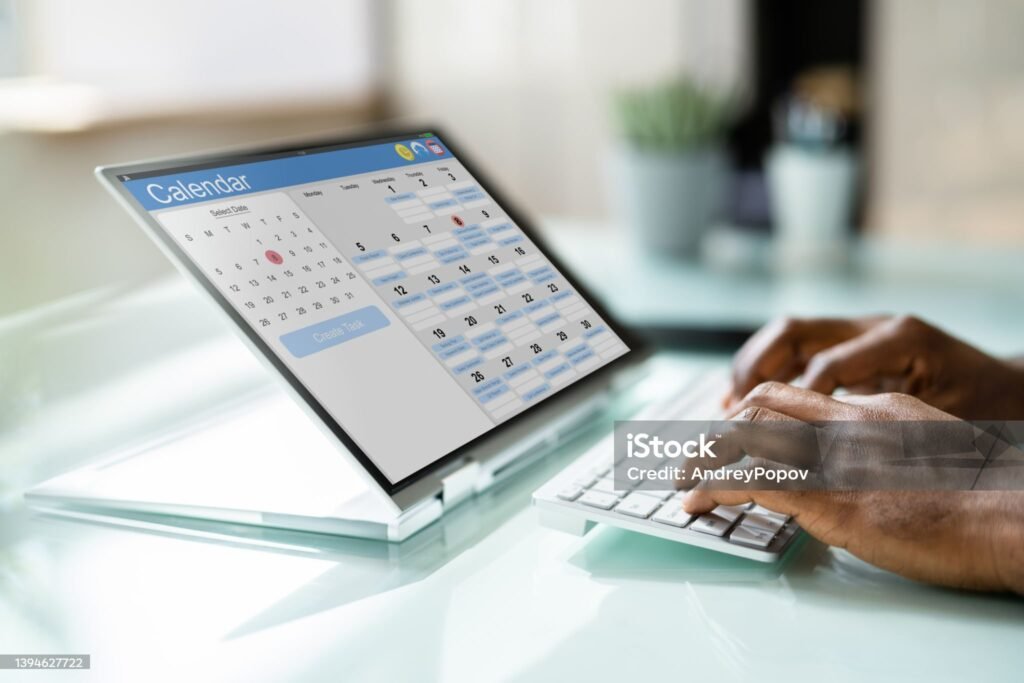In the ever-expanding universe of digital marketing, email remains a constant—a powerful channel that, when harnessed correctly, can propel businesses to new heights. Amidst a sea of tools claiming to be the best, SendX and Sendloop emerge as prominent contenders. Both platforms offer a suite of features designed to make email marketing both effective and efficient, but which one is the right fit for you? Let’s peel back the layers, comparing them on various aspects that matter most to marketers. Our journey begins with an exploration of Ease of Use and User Interface—because in the world of email marketing, simplicity and functionality reign supreme.
| SendX | Sendloop |
|---|---|
 |  |
| G2 Score – 4.6 out of 5 stars | G2 Score – 4.4 out of 5 stars |
| TrustRadius Score -Nil | TrustRadius Score – Nil |
Ease of Use and User Interface
The digital tools we choose should empower us, not encumber us. The ease of use and the intuitiveness of the user interface (UI) in an email marketing platform can significantly impact your daily operations, affecting everything from campaign creation to data analysis.
SendX: Streamlined Simplicity
SendX has been designed with the user in mind, ensuring that its interface is as intuitive as it is powerful. From the moment you log in, you’re greeted with a clean, straightforward dashboard that guides you through each step of the process without overwhelming you with jargon or clutter. Whether you’re crafting your first campaign, segmenting your audience, or analyzing the results, SendX makes the journey smooth and straightforward. The platform’s drag-and-drop editor further simplifies email creation, making it accessible to marketers of all skill levels.
Sendloop: Customization at Your Fingertips
Sendloop offers a slightly different approach, focusing on flexibility and customization. Its UI caters to both novice users and seasoned marketers by providing a range of templates and editing tools that can be as simple or as complex as you need them to be. This adaptability means that whether you’re looking to quickly launch a campaign using pre-designed templates or dive deep into custom HTML editing, Sendloop has you covered. However, this flexibility can sometimes introduce a steeper learning curve, particularly for those new to email marketing.
Choosing What Works for You
Deciding between SendX and Sendloop on the basis of ease of use and user interface comes down to your personal preference and needs:
- SendX is ideal if you value a no-fuss, streamlined approach that allows you to get your campaigns up and running quickly, with minimal learning time. It’s suited for businesses that want efficiency without sacrificing depth.
- Sendloop, on the other hand, is perfect for those who prioritize flexibility and the ability to customize their campaigns extensively. It offers a broader range of options for those willing to invest a bit more time into mastering the platform.
Both platforms offer distinct advantages, but the right choice will align with how you work best—whether you prefer the simplicity and speed of SendX or the customizable, hands-on approach of Sendloop.
Pricing and Value for Money
When it comes to choosing an email marketing tool, the pricing structure and what you get for your investment are often deal-breakers or deal-makers. Let’s delve into how SendX and Sendloop approach their pricing models and the value they offer to users.
| SendX | Pricing Structure: Based on the number of subscribers, with all plans offering unlimited email sends. Basic Plans: Up to 1,000 subscribers: Starting at around $7.49/month when billed annually. Up to 2,500 subscribers: Starting at around $14.99/month when billed annually. Up to 5,000 subscribers: Starting at around $29.99/month when billed annually. Higher Volume Plans: For larger lists, the pricing continues to scale. For example: Up to 10,000 subscribers: Starting at around $39.99/month. Up to 15,000 subscribers: Pricing available upon request. |
| Sendloop | Sendloop focuses on simplicity and ease of use in email marketing. Pay-As-You-Go Plan: Ideal for infrequent senders, with no monthly fees. You buy email credits as needed; for instance, 1,000 email credits cost approximately $10. Monthly Subscription Plans: Starting from around $9/month for up to 500 subscribers, with unlimited email sends. Pricing increases with the number of subscribers. |
SendX: Straightforward and Scalable
SendX is known for its transparent pricing model, which is designed to grow with your business. It offers a simple, tiered pricing structure based on the number of subscribers, making it easy to understand and plan for as your list grows. All plans include unlimited email sends, access to all features including automation tools, and 24/7 support, which means you won’t be paying extra as your needs evolve. This straightforward approach is particularly appealing to small and medium-sized businesses looking for a solution that won’t break the bank as they scale.
Sendloop: Customizable Plans to Fit Your Needs
Sendloop takes a slightly different approach to pricing, offering more customizable options that cater to a wide range of needs, from small startups to large enterprises. Its pricing varies not just based on subscriber count but also on the features and services you choose to utilize, allowing for a more tailored solution. This a la carte approach can offer significant value to businesses with specific needs, ensuring they’re not paying for features they won’t use. However, it requires a clearer understanding of your requirements upfront to make the most cost-effective decisions.
Weighing Cost Against Features
When comparing SendX and Sendloop on pricing and the value for money, it’s essential to consider both the immediate cost and the long-term value.
- SendX offers a great balance of features and cost, particularly for businesses that expect to grow. Its all-inclusive plans mean you can access advanced features from the start, with pricing that scales predictably with your subscriber list.
- Sendloop, with its customizable plans, can be a more cost-effective option for businesses with very specific needs or those who prefer a pay-for-what-you-use model. It’s well-suited for users who know exactly what features they need and are looking to tailor their plan accordingly.
Both platforms present compelling options, but the best choice for you will depend on your business’s growth expectations, budgetary constraints, and how much customization you need from your email marketing tool.
Integration Capabilities
The ability to seamlessly integrate with other software systems, such as CRM platforms, e-commerce solutions, and social media tools, can significantly extend the power and reach of your email marketing campaigns.
SendX: Seamless Integrations for a Unified Marketing Approach
SendX offers a broad range of integrations with popular third-party tools and services, enabling businesses to connect their email marketing efforts with their wider marketing ecosystem. This includes direct integrations with CRMs like Salesforce, e-commerce platforms like Shopify, and many other tools that businesses rely on daily. These integrations are designed to be straightforward, allowing for the easy transfer of data between systems and ensuring that your marketing efforts are as cohesive and effective as possible.
Sendloop: Flexible Integration Options to Enhance Functionality
Sendloop also provides a variety of integration options, focusing on giving users the flexibility to connect their email marketing with essential business tools. While Sendloop’s list of direct integrations may not be as extensive as SendX’s, it compensates with its API and webhook capabilities, which tech-savvy users can leverage to create custom integrations. This allows for a tailored approach, where businesses can link their specific tools and workflows directly to their email marketing campaigns, albeit with a bit more effort compared to ready-made integrations.
Automation Capabilities
Automation in email marketing not only saves time but also enables marketers to deliver personalized experiences to their audience at scale.
SendX: Advanced Automation for Personalized Campaigns
SendX excels in providing advanced automation features that allow users to create sophisticated, behavior-based email sequences. With SendX, businesses can automate their email campaigns based on subscriber actions, engagement levels, and other custom triggers. This results in highly personalized communication paths that can lead to better engagement and conversion rates, all set up with an intuitive, user-friendly interface.
Sendloop: Straightforward Automation for Efficient Campaign Management
Sendloop offers automation features that focus on efficiency and ease of use. Users can set up autoresponders, schedule campaigns, and segment their audience based on predefined criteria. While Sendloop’s automation capabilities might not offer the same level of complexity as SendX’s, they provide a solid foundation for businesses looking to automate their email marketing efforts without needing to navigate a steep learning curve.
Choosing the Right Tool for Integration and Automation
The decision between SendX and Sendloop in terms of integration and automation capabilities will largely depend on your specific needs:
- If you’re looking for a tool that offers extensive direct integrations with a wide array of platforms and advanced automation features to craft personalized subscriber journeys, SendX might be the more suitable option.
- Alternatively, if your focus is on leveraging custom integrations through API access and you value straightforward automation options that cover the essentials, Sendloop could better match your requirements.
Both platforms offer valuable tools to enhance your email marketing strategy through integration and automation, but the best choice will align with the complexity of your marketing needs and your technical resources.

Related: Check out our free SEO suite

Analytics and Reporting
Effective analytics and reporting functionalities allow marketers to track key performance indicators (KPIs) such as open rates, click-through rates, conversion rates, and more. This data is invaluable for making informed decisions and optimizing future campaigns.
SendX: Comprehensive Analytics for Informed Decision-Making
SendX provides users with detailed analytics and reporting tools that cover a wide range of metrics. This includes not just basic statistics like open and click rates, but also more advanced data such as subscriber growth, campaign comparisons, and behavior-based insights. The platform’s analytics are designed to be easily accessible, offering visual representations of data that make it simple to digest and act upon. SendX emphasizes the importance of understanding your audience’s behavior and preferences, enabling you to tailor your strategies for maximum engagement and effectiveness.
Sendloop: Essential Metrics with User-Friendly Reporting
Sendloop offers a solid analytics suite that focuses on delivering the essential metrics marketers need to track their campaign performance. While it might not dive as deep into advanced analytics as some other platforms, it provides a clear, user-friendly interface for monitoring key metrics. Sendloop’s reporting features are built to give users a quick overview of their campaigns’ success, including open rates, click-through rates, and unsubscribe rates. For many businesses, these insights offer a sufficient basis for tweaking campaigns and improving results.
Making the Right Choice for Your Data Needs
When comparing SendX and Sendloop based on their analytics and reporting capabilities, your choice should align with the depth of data you require to drive your email marketing decisions:
- SendX is well-suited for marketers who rely on detailed analytics to inform their strategies. If you’re looking to dive deep into your campaign data, understand subscriber behavior on a granular level, and leverage advanced insights for optimization, SendX offers the comprehensive analytics capabilities you need.
- Sendloop, on the other hand, is a good fit for businesses that prefer a straightforward approach to campaign analytics. If your primary need is to access essential metrics and get a quick, clear view of your campaign performance without the need for complex data analysis, Sendloop’s reporting features will meet your requirements effectively.
Both SendX and Sendloop provide valuable insights into your email marketing efforts, but the level of detail and the way data is presented differ. Choosing the platform that best matches your approach to data analysis and decision-making will ensure you have the tools necessary to refine your campaigns and achieve your marketing objectives.
Customer Support
Effective customer support ensures that users can quickly resolve issues, understand platform features, and use the tool to its fullest potential. It’s an essential service that directly impacts user satisfaction and productivity.
SendX: Dedicated and Responsive Support
SendX is known for its responsive customer support system, offering multiple channels for assistance including live chat, email support, and a comprehensive knowledge base. The platform prides itself on providing quick and helpful responses, ensuring users can solve their problems and get back to their marketing efforts as soon as possible. This dedication to customer support is a significant advantage for businesses that rely on timely assistance.
Sendloop: Varied Support with Self-Help Options
Sendloop also offers a range of support options, focusing on a mix of direct support and self-help resources. This includes email support and access to an extensive knowledge base and documentation. While Sendloop provides valuable information through its self-help resources, the response times for direct support requests can vary. The platform encourages users to explore the knowledge base for immediate answers, positioning its direct support as a secondary option.
Learning Resources
The availability of learning resources is crucial for maximizing the potential of any email marketing tool. It helps users understand best practices, explore advanced features, and improve their marketing strategies.
SendX: Comprehensive Educational Materials
SendX offers an extensive collection of learning materials, including tutorials, articles, webinars, and e-books. These resources cover a wide range of topics from basic email marketing principles to advanced tactics. SendX is committed to educating its users, enabling them to grow their skills and achieve better marketing outcomes.
Sendloop: Focus on Getting Started and Best Practices
Sendloop’s learning resources are designed to help users quickly get up to speed with the platform and understand the fundamentals of effective email marketing. The emphasis is on straightforward guides and articles that provide practical advice and best practices. While Sendloop may not offer as broad a range of educational content as some competitors, its resources are targeted and useful for new users looking to start their email marketing journey.
Choosing Based on Support and Learning Needs
The choice between SendX and Sendloop in terms of customer support and learning resources depends on your preferences for accessing support and how you like to learn:
- If you value immediate, responsive support and a wide array of in-depth learning materials to continually enhance your email marketing knowledge, SendX stands out as a strong option.
- If you prefer a platform that offers solid self-help resources with a focus on essential support and targeted educational content, Sendloop may be more aligned with your needs.
Both SendX and Sendloop provide essential support and resources, but the extent and nature of these offerings differ, reflecting each platform’s approach to user assistance and education.
Template Availability and Customization
A diverse library of templates not only speeds up the campaign creation process but also ensures your emails stand out in your subscribers’ inboxes. Let’s compare how SendX and Sendloop approach this critical feature.
SendX: A Focus on Variety and Flexibility
SendX provides users with a wide selection of email templates suitable for various types of campaigns, from newsletters and promotions to event announcements and more. These templates are designed to be both visually appealing and mobile-responsive, ensuring your messages look great on any device. What sets SendX apart is its emphasis on customization. The platform’s drag-and-drop editor allows for easy modification of templates, giving users the freedom to adjust layouts, colors, fonts, and more to match their brand’s aesthetic. This level of flexibility is invaluable for businesses looking to create unique, branded emails without needing extensive design skills.
Sendloop: Streamlining Email Design with Templates
Sendloop also offers a range of email templates, with a focus on ease of use and speed of deployment. Its template library covers a variety of campaign types, and while the customization options are robust, they may not offer the same level of detail as SendX’s editor. However, Sendloop’s templates are designed to be effective and efficient, allowing users to quickly launch campaigns with minimal fuss. For businesses that prioritize speed and simplicity in their email design process, Sendloop’s approach to templates provides a solid balance between customization and convenience.
Making the Right Choice for Your Design Needs
When it comes to template availability and customization, your decision between SendX and Sendloop should be guided by your specific design needs and how much time you’re willing to invest in customizing your emails:
- SendX is ideal for marketers who value a high degree of customization and want to ensure their emails closely align with their brand identity. It offers the tools and flexibility needed to create unique, engaging emails that capture your brand’s look and feel.
- Sendloop, on the other hand, may be better suited for businesses looking for a straightforward, efficient way to design emails. Its templates provide a quick starting point for creating professional-looking campaigns, with enough customization options to meet most needs without overwhelming users with complexity.
Both platforms recognize the importance of templates in streamlining the email creation process and engaging subscribers, but they cater to different preferences in terms of design complexity and customization depth.
Conclusion
Choosing between SendX and Sendloop for your email marketing endeavors boils down to aligning the platform with your specific needs and preferences. SendX stands out for its robust customization options and extensive template library, catering to businesses aiming for brand-centric, visually compelling emails. Its user-friendly interface and detailed analytics further support marketers in crafting targeted campaigns that resonate with their audience. On the other hand, Sendloop offers simplicity and efficiency, making it ideal for those seeking quick campaign setup without sacrificing quality. Its straightforward approach to template customization and campaign management appeals to users looking for an effective, no-frills email marketing solution. Ultimately, whether you’re drawn to the comprehensive, flexible features of SendX or the streamlined, efficient functionality of Sendloop, the choice should reflect your marketing objectives, design preferences, and the level of detail you require in your campaigns.
Read next:
- Get Your Mortgage Business to the Top of Google: A Step-by-Step SEO Guide
- The Ultimate Guide to Capturing Credit Card Shoppers Through SEO
- Unlock the Secrets to Sky-High Rankings for Your Banking Website
- How Financial Institutions Can Skyrocket Their Online Presence with SEO
- How to Utilize Facebook Lead Generation Ads: A Deep Dive






















Comments are closed.